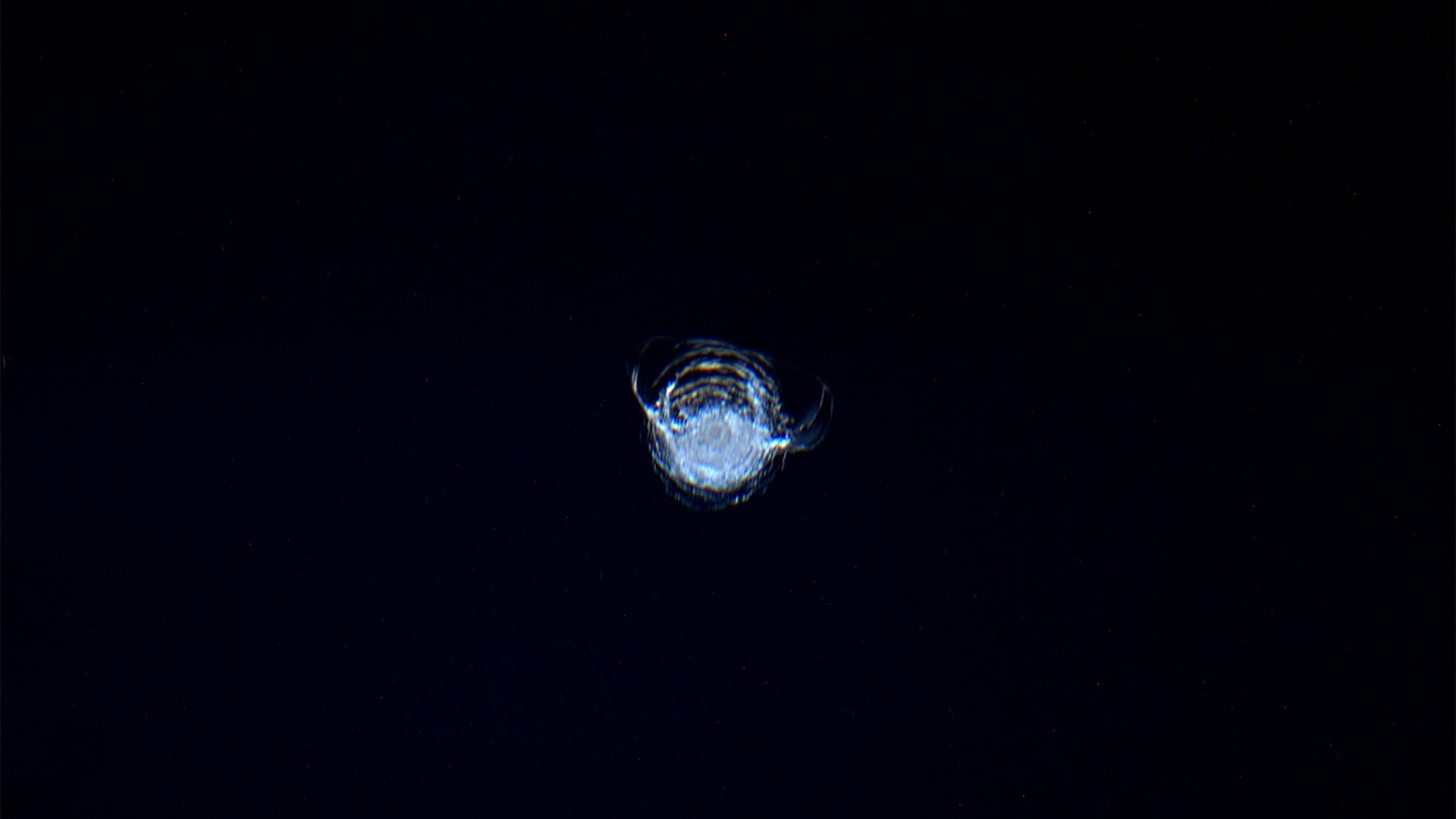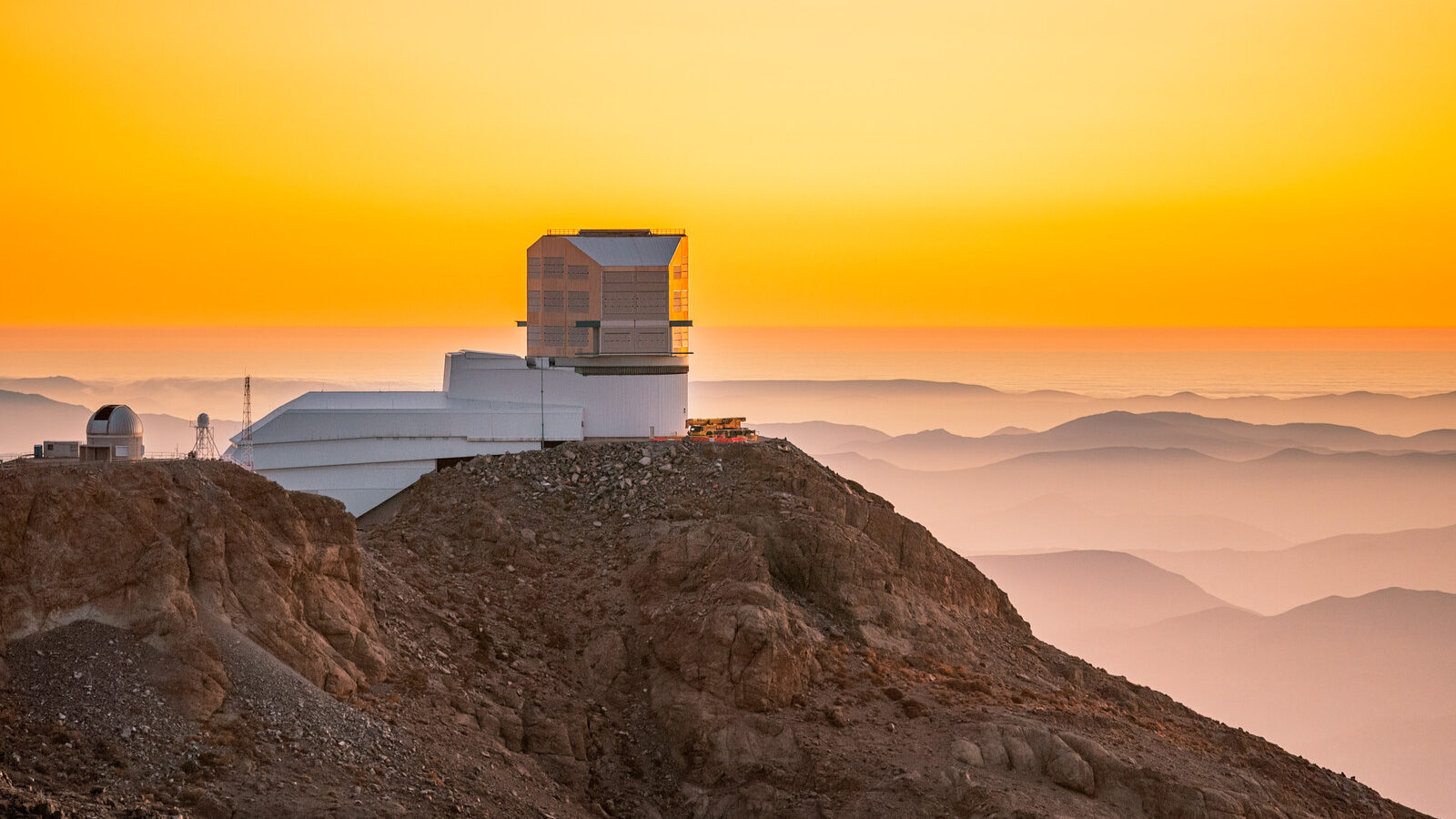How do tiny pieces of space junk cause incredible damage?
It all comes down to velocity.

In 2016, European Space Agency astronaut Tim Peake shared a photo of a quarter-inch dent gouged into a glass window of the International Space Station (ISS). The culprit? A tiny fleck of space junk.
The piece of debris, perhaps a paint flake or a metal fragment from a satellite, was only a few thousandths of a millimeter across — not much bigger than a single cell of E. coli.
But how can something so small cause visible damage?
"It all comes down to velocity," said Vishnu Reddy, an astronomer at the University of Arizona. Objects at the altitude of the ISS and most other satellites — around 250 miles (400 kilometers) above Earth — revolve around our planet once every 90 minutes, according to the European Space Agency. That's more than 15,600 mph (25,200 km/h), 10 times the speed of an average bullet shot on Earth, Robert Frost, an instructor and flight controller at NASA, wrote on Quora.
Related: What would happen if you shot a gun in space?
The energy of an impact isn't just related to the size of an object; velocity (speed and direction) are equally important. That's why a small bullet can cause so much damage; when moving at a high enough velocity, any object could be dangerous, Reddy told Live Science.
Keep in mind that velocity is additive, said Kerri Cahoy, an associate professor of aeronautics and astronautics at the Massachusetts Institute of Technology. So, if two objects are moving toward one another when they collide, that increases the energy of their impact.
Breaking space news, the latest updates on rocket launches, skywatching events and more!
"Think of it like driving on a highway," Cahoy told Live Science. Two fast-moving cars moving in the same direction could touch and just "barely kiss one another," she said. But if a vehicle — even a lightweight one, like a motorcycle — hits a car while speeding in the opposite direction, it could be disastrous for both drivers.
Likewise, in space, a fast-moving fleck of paint that collides with the ISS can leave a relatively big mark.

In space, satellites, spacecraft and debris orbit along many different paths; while one object might orbit horizontally around the equator, another might loop vertically around the poles. Some objects even move "in retrograde," meaning they rotate counter to the Earth’s orbit. As more and more debris clutters space, Earth's low orbit (in which the ISS rotates) turns into a packed highway at rush hour. "There can be the potential for a lot of damage," Cahoy told Live Science.
The astronauts onboard the ISS were lucky that a larger piece of debris didn't hit their window. A microbe-size fragment may leave only a dent, but a pea-size fragment can disable critical flight systems, according to the European Space Agency. A piece of debris the size of a ping-pong ball? "That would be catastrophic," Reddy said. At that size, space junk could cause the space station to rapidly depressurize, making it impossible for astronauts to breathe onboard, Reddy said.
Space junk is a growing problem. Earth's orbit contains at least 128 million pieces of debris, and 34,000 of them are larger than about 4 inches (10 centimeters), according to the Natural History Museum in London — and those are just the fragments that are large enough to detect. These smaller pieces form when satellites naturally weather under extreme ultraviolet radiation, when larger pieces of space debris collide or when satellites are intentionally destroyed. Larger pieces include 3,000 derelict satellites, as well as bolts and other parts shed by spacecraft during launches.
By tracking space junk, scientists can tell countries and companies when to maneuver a spacecraft out of the path of a speeding piece of debris, Reddy said. The ISS has performed 25 of these maneuvers since 1999, according to the Natural History Museum. And researchers are developing ways to fish junk out of space, such as using hooks, nets and magnets to pull it back into Earth's atmosphere.
Too much space junk could make it dangerous for humans to use Earth's orbit for satellites and other types of spacecraft. We're nowhere near that point now, but it's important to get ahead of the space junk problem to prevent further accumulation, Reddy said.
"We rely on space for so many things: communication, forecasting weather, banking, entertainment and military," he said. "In terms of our progression as a civilization, we would go many steps backward if we did not have access to space."
Originally published on Live Science.
Join our Space Forums to keep talking space on the latest missions, night sky and more! And if you have a news tip, correction or comment, let us know at: community@space.com.

Isobel Whitcomb is a contributing writer for Live Science who covers the environment, animals and health. Her work has appeared in the New York Times, Fatherly, Atlas Obscura, Hakai Magazine and Scholastic's Science World Magazine. Isobel's roots are in science. She studied biology at Scripps College in Claremont, California, while working in two different labs and completing a fellowship at Crater Lake National Park. She completed her master's degree in journalism at NYU's Science, Health, and Environmental Reporting Program. She currently lives in Portland, Oregon.

